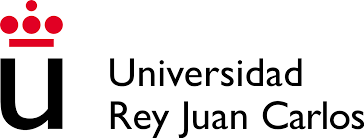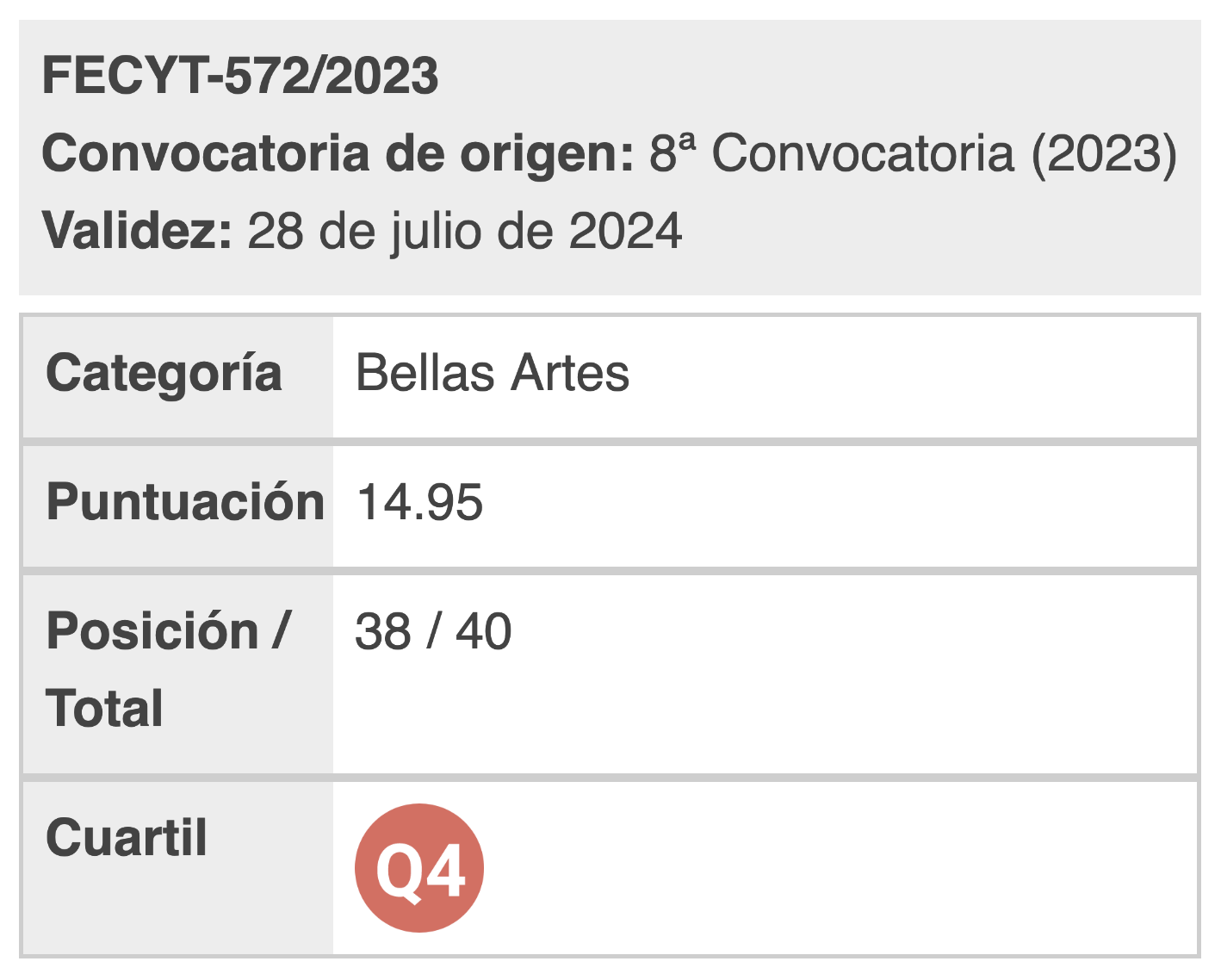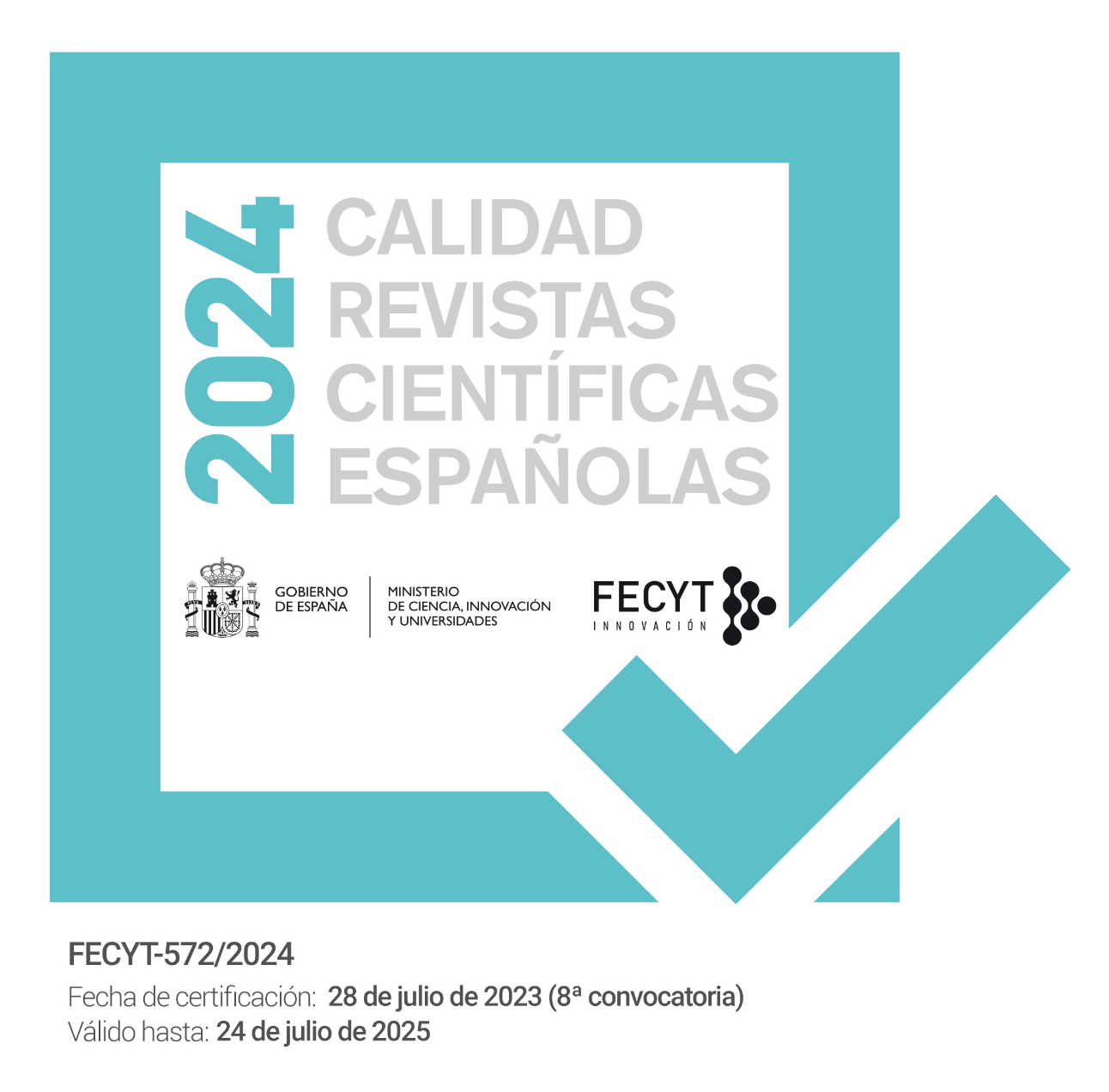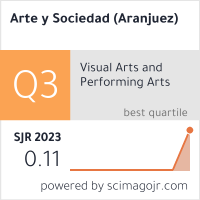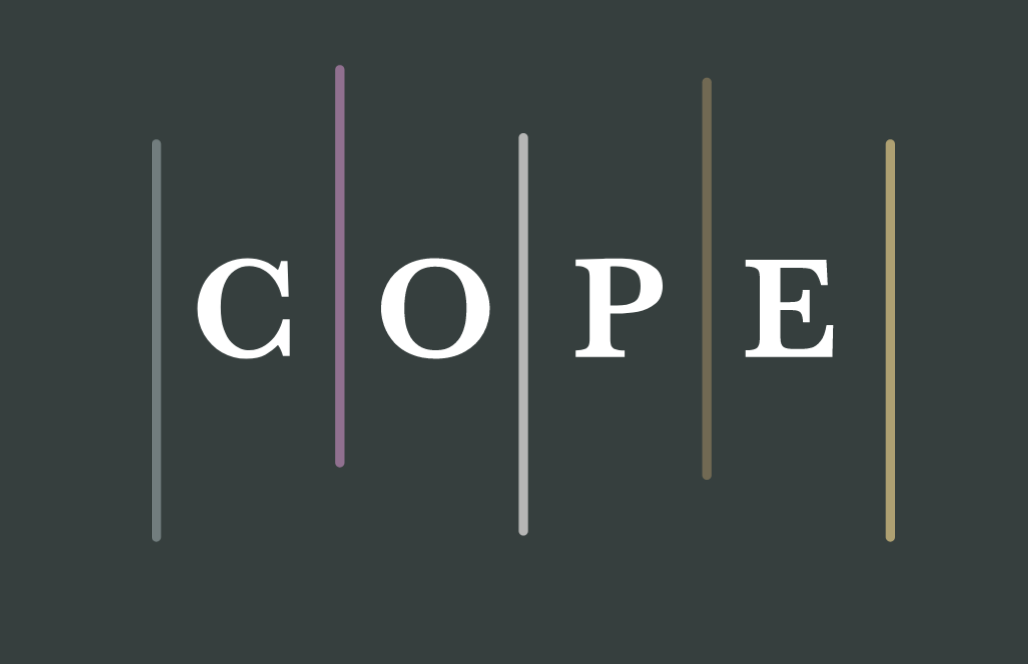THE DISSEMINATION OF ART HISTORY AMONG THE GENERAL PUBLIC THROUGH AN UNPUBLISHED WORK BY JOSÉ PIJOAN
DOI:
https://doi.org/10.5281/zenodo.7558589Keywords:
José Pijoan, Geneviève Bugnion, Summa Artis, art dissemination, general publicAbstract
An unpublished text by José Pijoan located at the Hoover Institution is introduced. Pijoan, a disseminator of art history, was the author of a History of Art (Salvat) in three volumes and the seventeen volumes of Summa Artis (Espasa-Calpe). He also published a History of the World (Salvat) in five volumes. The text that remained unpublished dealt with Caravaggio’s life and was intended to be published in 1955 in a series of twelve articles devoted to lives of artists through the press agency of Joaquín Maurín. Its analysis is approached from a methodology compared with his previous production and from a double point of view: from those who edited it and from those who would read it in Latin America. It is concluded that the motivation for the writing and its tone were related to the dissemination of art history among a non-specialized public, in line with the complete work developed by Pijoan. It is pointed to that his wife, Geneviève Bugnion, may have participated in the writing.
References
Blasco Bardas, A. M. (1992). Joan Maragall i Josep Pijoan: edició i estudi de l’epistolari. Barcelona: Publicacions de l’Abadia de Montserrat.
Bozal, V. (2020). Crónica de una década y cambios de lugar. Madrid: Antonio Machado Libros.
Calo, M. A. (1994). Bernard Berenson and the twentieth century. Philadelphia: Temple University Press.
Canary, R. (1923). «Introducing», en The Southern California Trojan, 10 de Agosto.
Carew, H. D. (1930). «”El Obispo” of Pomona», en Touring Topics, 3 (22), marzo.
Corredor, J. M. (1963). “José Pijoan. El cosmopolita nostálgico”, en Destino, 29 de junio. Barcelona.
Didi-Huberman, G. (2013). L’album de l’art à l’époque du musée imaginaire. París: Hazan.
Eberenz-Greoles, C. (2015). «Josep Pla "Vida i miracles de Josep Pijoan". La biografia com a retrat i autoretrat. Presències, allusions i omissions», en Espinós, J., Maestre, A., Marcillas, I. (eds.). La biografia a examen. Barcelona: Publicacions de l’Abadia de Montserrat.
Falgairolle, A. de (1935). «Lettres espagnoles», en Mercure de France, serie moderna, 879, 1-15 de febrero. París.
Gómez de Baquero, E. (1926). «Una “Historia del mundo”», en El Sol, 1 de junio.
González, M. P. (1928): «José Pijoán. Hombres representativos», en Repertorio Americano, 13 (XVII), 6 octubre. San José.
Maragall i Noble, J. (2014): “Apunts biogràfics de Josep Pijoan”, pp. 213-282, en Pijoan, P., y Maragall, P. Josep Pijoan. La vida errant d’un català universal. Cabrera de Mar: Galerada.
Maurín, J., Pijoan, J. (1955): Correspondence with José Pijoan (including an essay of his on Caravaggio), 1930-1955, Joaquin Maurin papers, Box 8, Folder Pijoan, José, Hoover Institution Library & Archives.
Pijoan, J. (1910): Carta a Francisco Giner de los Ríos, 1 de abril, Real Academia de la Historia, Fondo ILE-Giner de los Ríos, 18-451.1, Madrid.
(1931): Arte de los pueblos aborígenes. Summa Artis (I). Madrid: Espasa-Calpe.
(1940): “Au Revoir”, en Art In The Modern World. European Renaissance, Baroque, Modern Art. Chicago: University of Knowledge.
(1942): Arte bárbaro y prerrománico desde el siglo IV hasta el año 1000. Summa Artis (VIII). Madrid: Espasa-Calpe.
(1946): Arte precolombiano, mexicano y maya. Summa Artis (X). Madrid: Espasa-Calpe.
Pla, J. (1968). “Vida i miracles de Josep Pijoan”, en Tres biografies. Obra completa (X). Barcelona: Destino.
Rodríguez Ferrándiz, R. (coord.) (2012). La polémica sobre la cultura de masas en el periodo de entreguerras. Una antología crítica. Valencia: Publicacions de la Universitat de València.
Ruiz Manent, J. M. (1928). «Ideas para un apéndice a la historia del arte. Pijoan en Madrid», en El Sol, 14 noviembre. Madrid.
Whittaker, R.: «Lucidity: A Conversation with Irene Pijoan», en Hidden Dimensions, Works&Conversations, 14, 2008. Recuperado de: http://www.conversations.org/story.php?sid=147 (Fecha de consulta: 24-08-2022).
Zulueta, C. de (2001). Compañeros de paseo. Sevilla: Renacimiento.

Published
How to Cite
Issue
Section
License

This work is licensed under a Creative Commons Attribution 4.0 International License.
You are free to:
Share — copy and redistribute the material in any medium or format.
Adapt — remix, transform, and build on the material for any purpose, including commercial.
Attribution — You must properly acknowledge the authorship, provide a link to the license, and indicate if any changes have been made.
You may do so in any reasonable manner, but not in any way that suggests that you endorse or receive any endorsement by the licensor for your use.
No additional restrictions — You may not apply legal terms or technological measures that legally restrict you from doing what the license allows.

